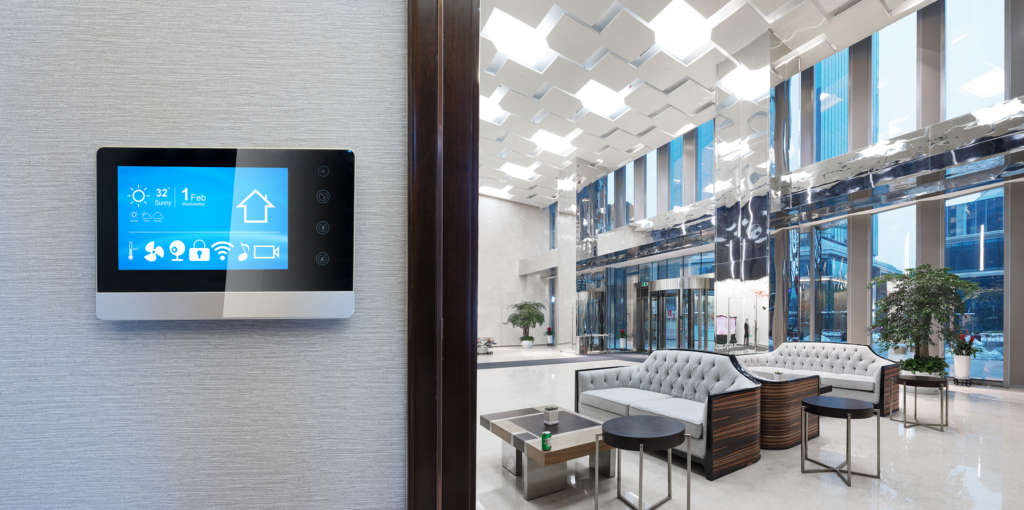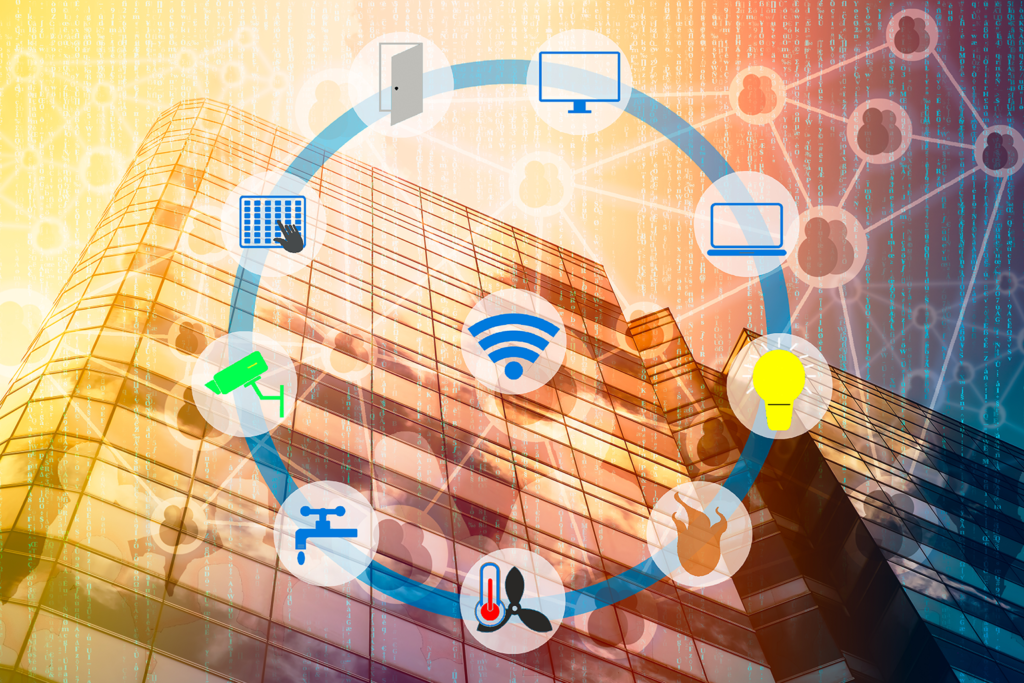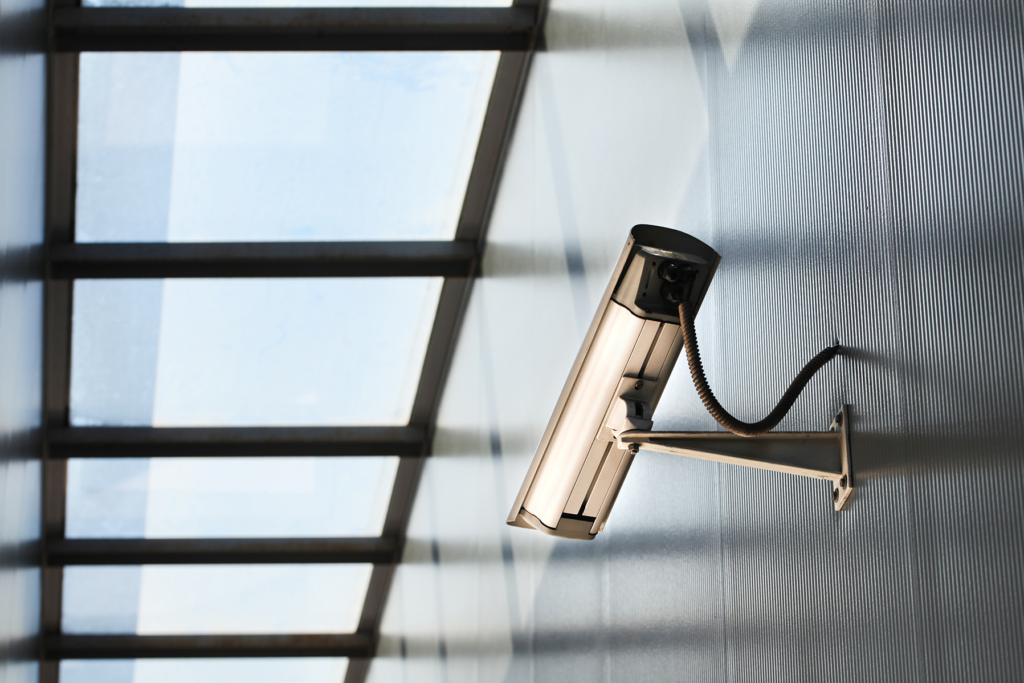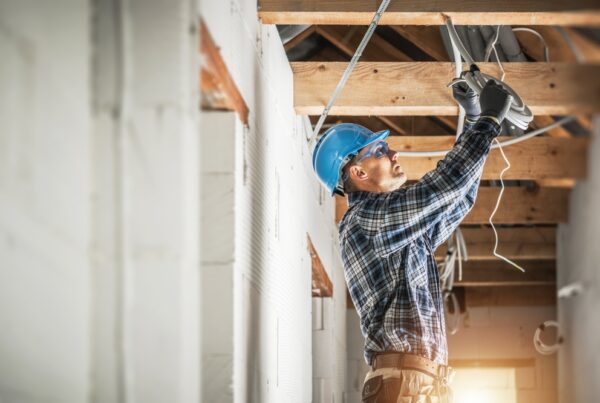Property management is full of challenges such as finding and retaining quality tenants, revenue growth, unexpected costs and damages, time management and controlling expenses – but the Internet of Things (IoT) is transforming the industry, promising to alleviate many of these issues.

According to a recent survey, property managers are increasingly adapting their building management and maintenance strategies in response to the IoT, with 60 per cent of professionals predicting that it will have a greater impact on their building and maintenance policies within the next 12 months.
Sixty-five per cent of respondents are also planning to increase investment in building capital expenses this year, including advanced building technologies that manage and glean insights from new data sets.
IoT applications can be used in property management to enhance the efficiency and efficacy of all processes while reducing costs. Alerts and big data analysis can improve standard protocols, such as preventative measures and instant responses, so that managers can focus more on the core business, infrastructure optimisation and profit maximisation.
While respondents indicated that IoT is taking hold within their businesses, challenges still exist in taking full advantage of building data. Seventy percent of facility managers’ report that while staff are extremely skilled in data analysis, only 27 percent utilise data driven analytics solutions. Key barriers to uptake include the level of investment required (39 per cent reporting as a top concern) and the lack of internal resources available to interpret data into actionable results (31 per cent reporting as a top concern).
Another factor impacting the shift toward new building technologies is that only 26 per cent of property managers feel that available building information is totally adequate for maintenance planning. Most respondents cited room for improvement in this area, and only 15 per cent reported they fully utilise predictive maintenance tools to proactively assess and target equipment maintenance.
Property professionals need to be able to better visualise what’s happening across their footprint and make educated decisions about how to correct and improve conditions.
More than half of property managers admit to still being reactive when it comes to maintaining building systems, which can have major impacts on occupant comfort as well as decrease the life of the building. We are however, seeing a change in attitude among facility professionals that is driving them to think differently about the way they collect and assimilate building data – it’s an incredibly exciting time for the industry.
Both facility and property managers are more prepared than ever before to invest in advanced building technologies. Opportunities exist to gain value from critical building data – including connected services such as remote analytics – which sets facility managers up for success in optimising their buildings to run at the highest levels of efficiency.
The maintenance of buildings is heading to a future where machines do much more than humans, and for a good reason. With the rising need for physical security and mandated maintenance, a singular worker monitoring all systems in an office or residential building will soon becoming inadequate. Property management strategies once driven by human oversight need to undergo digital transformation. That is where IoT can make a difference.
Unfortunately, traditional Building Management Systems (BMS) do not have the capability of offering the data in real-time that is required from managers to make well-informed decisions concerning efficiency, staff productivity, and comfort.
IoT can be defined as connected sensor networks and computing embedded in physical objects linked through internet connectivity.

1. Embedded sensors in devices and buildings
Embedded sensors deployed throughout a building help in optimising energy usage and attaining carbon neutrality for business owners. Smart devices can be connected to monitor various aspects, such as elevators, hot water systems, HVAC solutions or lighting within a building, reducing operating costs, expanding their service scope, increasing added value services and keeping energy waste to a minimum.
Connectivity also allows them to communicate among themselves. They help keep track of critical assets and monitor activity across the building. Environmental sensors embedded at entrances keep track of visitors and help with security maintenance.
2. Room scheduling and reservations
An important application of IoT is room reservation systems which help in optimising indoor spaces. Intelligent scheduling tools called occupancy management systems to allow managers to see which apartments are booked or available in real-time through a visual floor plan.
3. Stock monitoring and usage
Organisations can also get a more comprehensive view of their assets and inventory than before. It helps them meet Service-Level Agreements (SLAs) and ensure customer trust. They can maintain an accurate stock count across various departments through innovative solutions like NFC tags or QR Codes placed strategically throughout the property.
4. Safety systems
Despite the concerns and debate worldwide, IoT is a game-changer for safety and security. It helps to monitor smoke detectors, alarms, and other life-safety systems remotely over the internet rather conveniently. The applications gather real-time data from sensors and pass on information about upcoming maintenance checks or emergencies to the controllers.
5. Data storage
Cloud-based building management software enables data aggregation and analysis while providing the highest level of security. It comes with minimal deployment and operating costs and a customised user experience based on the requirement of the managers.
The service provider manages the upkeep and maintenance of these systems.
Property managers also get the flexibility to widen the network of IoT sensors and their types and enhance their performance through advanced techniques of Machine Learning and Artificial Intelligence. This was not possible in the traditional scheme of things.

6. Equipment and embedded beacons
Beacons are convenient, cost-effective ways to instantly communicate with employees across the property. They are most often used by property managers to send messages such as an alert, a warning, or even communicate the location of something in the building.
Beacon technology has been around since Bluetooth was first created more than a decade ago and are now being used in a variety of ways to improve day-to-day management.
7. Smart energy meters
These are a great way to save money and time for facilities. Water and gas leaks can be detected quicker with these meters. This helps reduce loss due to inefficiencies and wastage of resources. It also helps save maintenance costs and losses due to downtime.
IoT data integration systems automate the process of entering and analysing information. They also help managers monitor and estimate the overall consumption of resources.
8. Energy management for facility managers
With energy-efficient technologies for smart buildings, it is now possible for organisations of all sizes and in every sector to reduce their carbon footprint, some facilities have already cut their costs by up to 30 per cent.
Sensors are being embedded in buildings to monitor and manage energy consumption while IoT development boards analyse the working of HVAC systems and other significant power draws at the facility — such as lights, doors, and windows throughout the day.
9. Fire suppression systems
Internet of Things-enabled heat-resistant temperature sensors can detect fires before they emit any harmful smoke or ash. They also calculate the intensity and predict the spread of fire, giving firefighters an idea of the measures they should take to control it.
Sensors can also tell them the possible sources of water nearby, so that all necessary resources can be deployed quickly to combat blazes efficiently.
Integrating a voice alarm system can also help evacuate residents by guiding them through the best escape routes. The data collected by the sensors can be used to track the spread of fire within the facility.
10. Remote monitoring of facilities via predictive maintenance
With the increasing emphasis on personnel safety, organisations need alternative solutions that allow staff to examine assets without being physically present in extreme environments.
Due to the proactive approach, potential failures or any major incidents can be avoided. The preventive measures keep the equipment from breaking down and will help prevent costly repairs.

The last word
IoT is permeating every aspect of modern life, including property management. The plethora of devices and sensors embedded in buildings offers new insights into how facilities are being used and what is happening with equipment at any given moment.
From room occupancy automation to smart energy management, these systems improve the efficiency of a facility. Data availability round the clock makes decision-making more accessible and faster.
Implementing IoT can help companies save money and provide a better experience for employees and residents alike.




